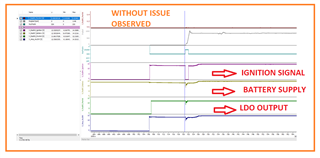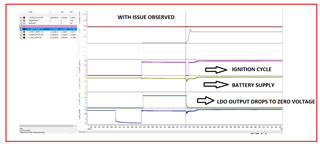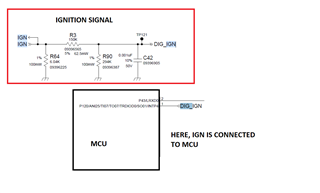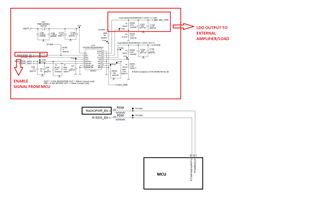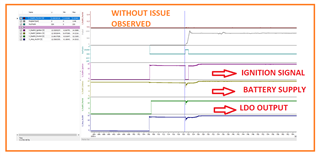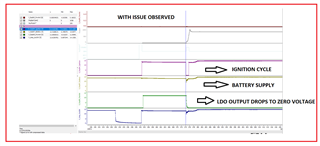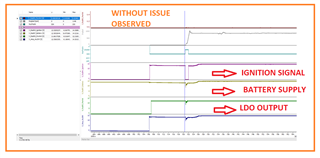Tool/software:
Hi Team,
We have used tps7b7702qpwprq1 in our design to give power to an external amplifier.
We have an external ignition signal to put the overall circuit into sleep and wake-up .
In few conditions, when ignition is removed and given back immediately, the LDO is working and we are getting desired output. However for the above same condition, we also observe that the LDO's output is Zero.
Is there any minimum timing required to be maintained for on and off cycle of the LDO ?
This is happening randomly for 5 out of 10 boards which is not acceptable and I have attached the waveforms for your reference.
